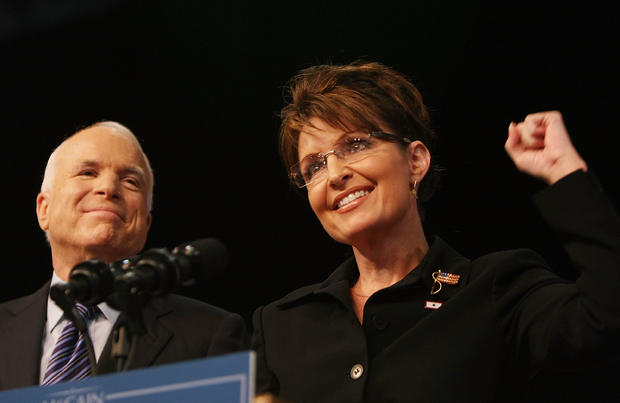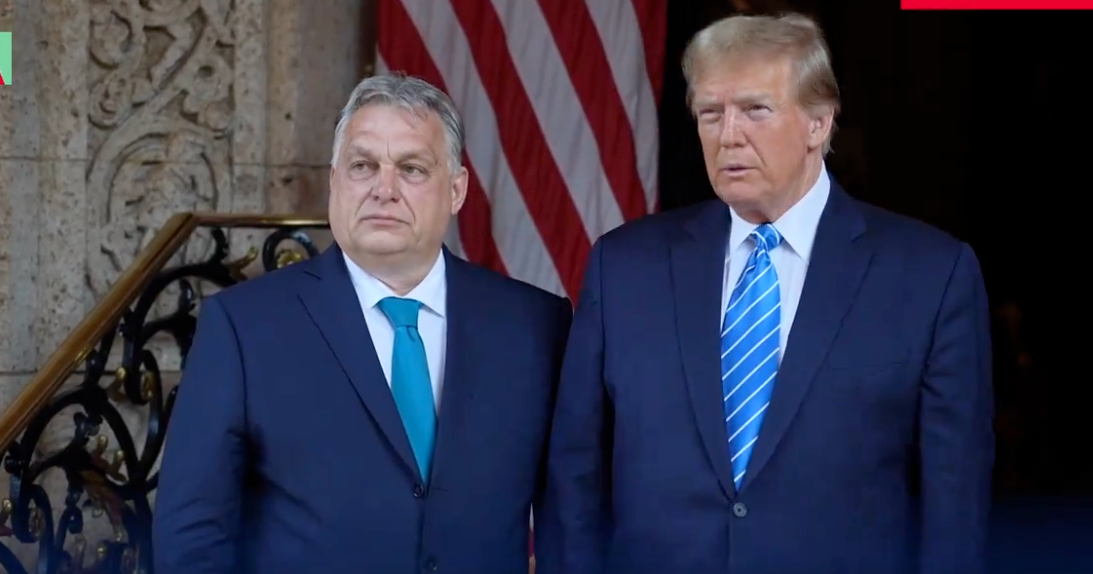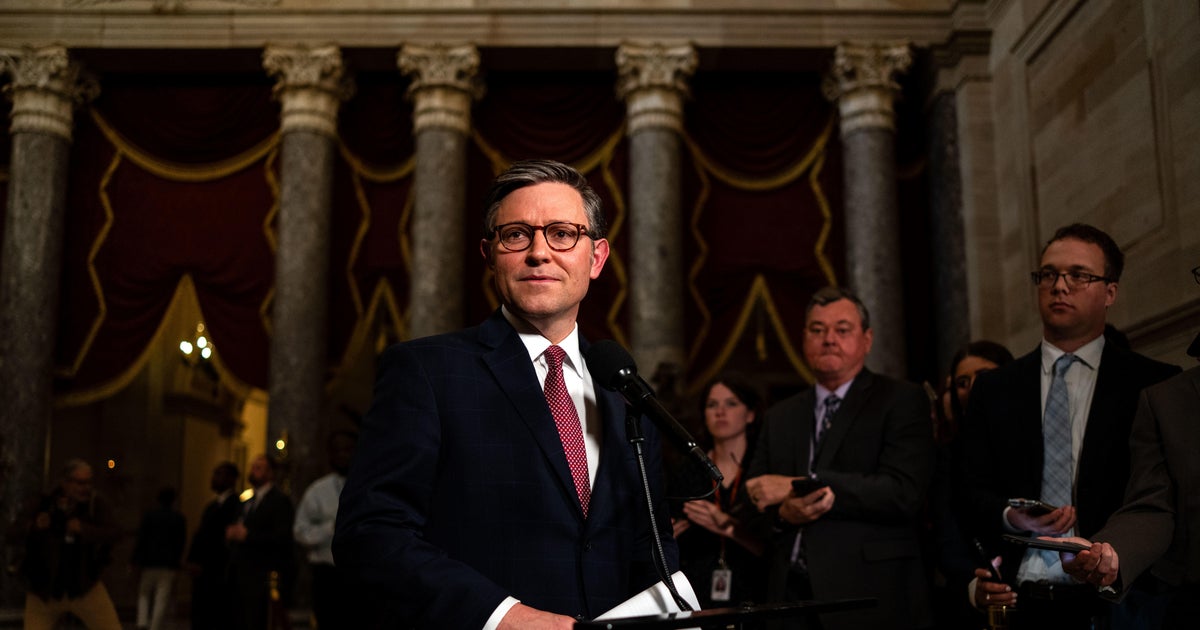Ferraro and Palin: What it meant to have a woman running mate then — what it would mean for Biden now
When Geraldine Ferraro accepted the vice presidential nomination at the 1984 Democratic convention, the history of the moment wasn't just palpable — it was the point.
"By choosing an American woman to run for our nation's second highest office, you send a powerful signal to all Americans," the three-term Democratic congresswoman from New York told the crowd in San Francisco. "There are no doors we cannot unlock. We will place no limits on achievement. If we can do this, we can do anything."
Ferraro wore a white suit in a nod to women's suffrage. Even though she planned for the gravity of her nomination, she was still stunned, as she recalled in a later documentary, to look out and see the convention floor filled with women chanting "Gerry!" and wiping tears from their eyes.
Before taking the stage, she told her daughters she was determined not to shed any tears herself. "Women can't cry over these things because it's too emotional, and it's a tough job, and you have to be tough to be vice president of the United States," she recalled.
Three and a half decades later, as presumptive Democratic nominee Joe Biden embarks on his own vice presidential search, the shortlist is entirely made up of women. He is also under pressure to make history by picking the first woman of color. The question in 2020 is not if there will be a woman on the ticket, but which woman will it be?
As the speculation brews, several potential contenders, like Kamala Harris, Gretchen Whitmer, Stacey Abrams, and Elizabeth Warren, have said outright they would take the job, breaking with the tradition of demure sidestepping when asked. Senators Amy Klobuchar and Catherine Cortez Masto are also said to be in contention for the role, as well as Governor Michelle Lujan Grisham.
The confidence of the women on today's shortlist comes after a record number of women ran for president this cycle, and after 2020, when, for the first time in history, a major party nominee was a woman, Hillary Clinton. This is a very different year than 1984 — record numbers of women from a variety of backgrounds and geographical locations, are being elected to Congress. In 2020, there are 126 women in Congress — over 100 more than when Ferraro was running for vice president.
"I think what we saw in 2018 was women running more authentically, talking about all the different aspects of their lives," said Debbie Walsh, director of the Center for American Women and Politics.
After Ferraro's nomination, it would be 24 years before another woman, Republican Alaska Governor Sarah Palin, would be selected as a running mate. But now, Democrats say it would be nearly impossible to create a list of running mates without including a significant number of women.
"This election is going to be decided by women voters," said Christina Reynolds of Emily's List and a veteran of Clinton's 2016 campaign. "When you look at who is driving change in this era, it's women."
Gerry in the gap
Women voters have been outnumbering male voters in presidential elections since 1964, but it was in 1980 when a new phenomenon in politics appeared: the gender gap. The election of Ronald Reagan showed that women were voting for a different candidate than men were, and that women were more likely to support the Democratic candidate.
By the summer of 1984, Reagan was well on his way to re-election. His Democratic opponent, Walter Mondale, knew that if he ran a traditional campaign, he would never "get in the game," as he recalled in his book, "The Good Fight." He drew up a short list that included Ferraro, who was also heading the convention platform committee at the time, and San Francisco Mayor Dianne Feinstein. Ferraro indicated if offered the job she'd say yes, but she still never expected to get it. Mondale's wife Joan urged him to pick a woman to "break the white-male mold" and to tap into the new strength of the women's vote.
"Picking Ferraro was symbolic in that sense, but a symbolic gesture with consequences," Mondale wrote in his book. "Skeptical voters would see what an effective woman candidate could accomplish. Young women could see new horizons open up. Everyone would see how America had changed in our lifetimes, and more doors would open."
After Ferraro's nomination that July, the gender gap was front and center. In August 1984, The Nation published an article titled "Gerry in the Gap," which addressed not only the symbolic nature of her choice as running mate but also highlighted issues she was known to champion. It also provided a glimpse at how women in politics would be covered when they sought higher office.
"Geraldine Ferraro has made her way in this male preserve by being both feminine and feminist," Evan Thomas wrote in a TIME magazine profile of Ferraro. "Her hair is frosted blonde, she wears stockings and makeup, and she loves to shop. When she needs to, she can flirt. But she is also tough and resilient, a shrewd back-room operator."
Ferraro had to navigate terrain that had not applied to her predecessors. There was no playbook for running on a major presidential ticket as a woman — from how she spoke and dressed to how she interacted with her running mate and where she stood on issues. "She was a person who didn't really have a choice but to be authentic," her daughter Donna Zaccaro told CBS News.
Ferraro also faced questions not typically asked. When confronted during an interview, "And if you weren't a woman, do you think you would have been selected?" She replied, "I don't know if I were not a woman, I would be judged in the same way, my candidacy. Whether or not I'd be asked questions like, you know, 'Are you strong enough to push the button?'"
Ferraro was the first woman to appear as a candidate in a nationally televised election debate. In the New Republic, she was praised for her performance against Vice President George H.W. Bush, "the super-credentialed Brahmin Yalie behaved like a frightened oaf, while the Italian-American ex-housewife displayed calm, breeding, and self-possession." But it also touched on the historic nature of her appearance, "There is still a touch of Eliza Doolittle in Ferraro." After the debate, Bush took some heat when he said, "We tried to kick a little ass last night."
By the late summer and into the fall, Ferraro was also hampered by the focus on her spouse. To start, the campaign faced intense pressure for her husband John Zaccaro to release his tax returns. In late August, Ferraro released a trove of financial records, but it raised more questions about real estate transactions and disclosures. Ferraro ended up holding a two-hour press conference to address the matter.
According to a New York Times report at the time, Reagan campaign manager Ed Rollins said she had become a "drag" on the campaign. Post-election interviews revealed there were in fact deliberate Republican efforts to take down a perceived threat.
In the end, Reagan won in a landslide. Post-election autopsies pointed to a number of factors not related to Ferraro. She may in fact have provided a slight bump that would not have otherwise existed, but despite putting "Gerry in the Gap," exit polling by The New York Times/CBS News found 62 percent of men and 56 percent of women voted for Reagan. It would be nearly a quarter of a century before there would be another woman running mate.
In a 2002 interview, Ferraro was asked if it was all worth it. "Oh absolutely," she said. "We did make a difference. We opened that door for women."
Along came Palin
In suspending her 2008 presidential bid, Hillary Clinton said that while she wasn't able to shatter the glass ceiling "it's got about 18 million cracks in it," and "the path will be easier next time."
Soon after, Republican nominee John McCain unveiled his running mate, a little-known governor from Alaska, at a rally in Dayton, Ohio. "She's not from these parts, and she's not from Washington, but when you get to know her, you're going to be as impressed as I am," he said of Sarah Palin.
Palin, flanked by her husband and children, referenced Clinton's speech from weeks earlier. "Hillary left 18 million cracks in the highest, hardest glass ceiling in America, but it turns out the women of America aren't finished yet, and we can shatter that glass ceiling once and for all."
John McCain' choice of Palin as his running mate was the surprise of the summer of 2008, and the apparent fumbles in vetting and his lack of familiarity with Palin would later be revealed in campaign autopsies. But at the time, McCain's campaign was facing a number of challenges that could be addressed with the selection of a running mate. At 72, he would have been the oldest candidate elected to a first term in the White House. Conservatives and evangelicals were skeptical of him. And he was facing an opponent with a historic candidacy in his own right, and white working women with children were a key battleground.
"She was a late addition to the short list, catapulted into contention by the campaign's calculus that a woman would broaden the ticket's appeal," wrote AB Culverhouse, who ran McCain's search team, in an op-ed.
"The names at the top of the ballot on Nov. 4 will be McCain and Obama, but the juicier battle this fall for an important group of swing voters - white working women with children - may be fought between the other two stars of the Republican and Democratic conventions, Sarah Palin and Hillary Rodham Clinton," read a New York Times article in September, 2008.
"It was a drastic misunderstanding of the gender gap," said Walsh of the idea of a Clinton/Palin crossover voter.
Palin electrified the audience at the Republican National Convention in St. Paul that September, giving a rousing speech scattered with anecdotes about her family and children. She spoke of herself as a mother of a son who was about to deploy to Iraq and of another born with special needs. She said she learned from her parents, both elementary school teachers, that "this is America, and every woman can walk through every door of opportunity."
And, perhaps among the most memorable lines from the speech, Palin described herself as "just your average hockey mom and signed up for the PTA."
Conservatives lavished praise for the speech, and the convention earned the ticket a bump in the polls. But it didn't last long.
Palin's vice presidential candidacy was hampered by a series of other events from her inability to name what newspapers she read in an interview with Katie Couric to headlines about how the Republican National Committee spending more than $150,000 on clothing and accessories for the Republican VP nominee, a minefield that not only raised outrage over the costs but also showcased just how important appearance was made to be. Palin became a punchline on "Saturday Night Live," played by Tina Fey.
In his 2018 memoir, McCain admitted he regretted taking his campaign staff's advice to put Palin on the ticket — "my gut told me to ignore it, and I wished I had."
In the end, President Obama won the 2008 election with 56% of women's support to McCain's 43%. However, while Mr. Obama won among women overall, McCain won white women 53% to 46%. That racial divide among women voters held in 2016, when Hillary Clinton won among women overall, but Donald Trump won the majority of white women.
The power of black women
As Biden begins his own vice presidential selection process, his challenge isn't to woo women voters, it is to pay homage to what they have already meant both to the Democratic Party and to his own candidacy. And black women have proven to be a driving force of the Democratic base.
"Black women have been the highest turnout, most loyal Democrats for the past 50 years since we've had access to the ballot box," said said Aimee Allison, founder of She the People, which works to elect women of color.
According to presidential exit polls dating back to at least 1972, black women have supported the Democratic presidential nominee in every election by at least 86% or more. In 2016, 96% of black women supported the Democratic ticket.
"It's recognizing a historic trend that's been in place but hasn't been spoken about," Allison said of the idea of Biden naming a woman of color as his running mate. She argued it would be necessary not just to balance the ticket and build excitement and turnout. Her message if his pick isn't a woman of color, "he doesn't want to win."
Biden's decision to select a woman running mate also comes in the wake of the global 2016 Women's March and the #MeToo movement.
It remains to be seen how a woman vice presidential nominee will navigate the political climate differently after such shifts, but all have had an impact on how women run for office.
"We're waiting to see if this is the one that wins," said Walsh. "We've had the first ever. We've had the first in each party, and now the question is when, when will we actually see a woman elected as vice president?"





